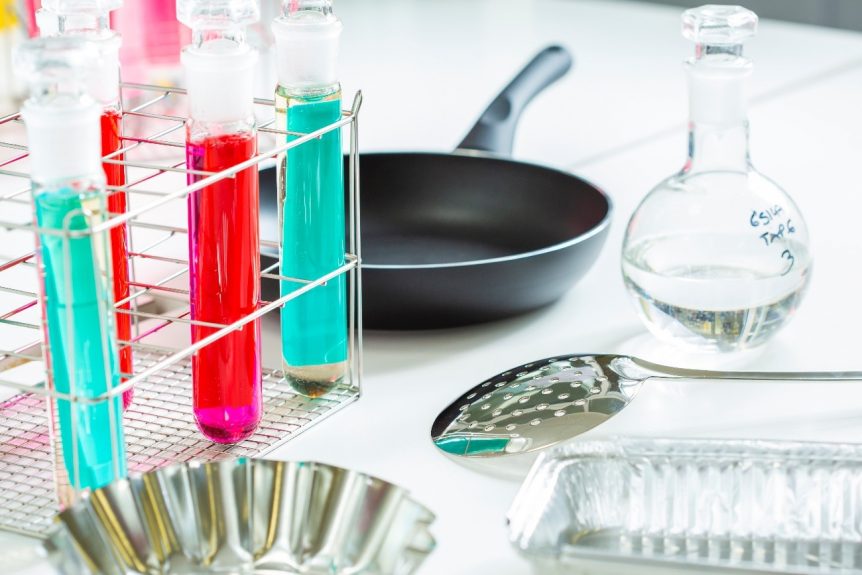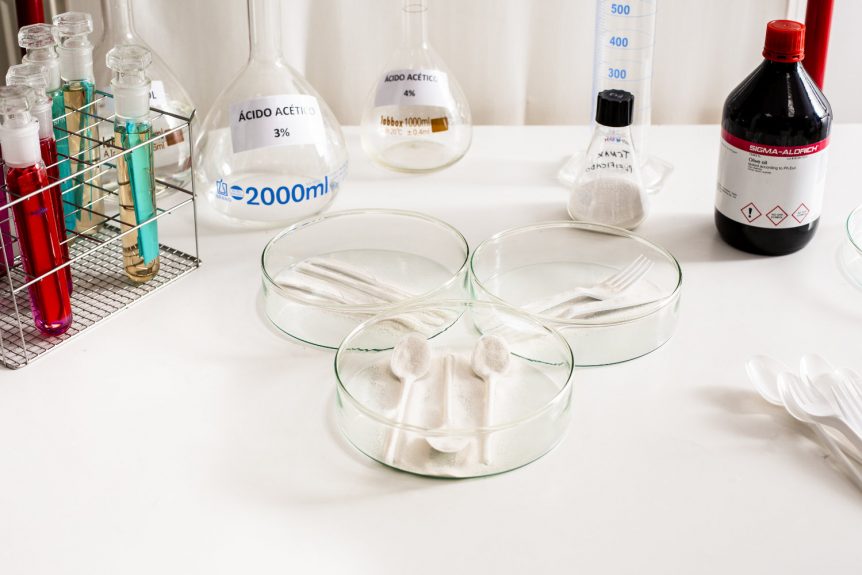Food contact materials testing
Among the regulatory obligations for plastic food contact materials, one of the most important is the analytical verification of the values of both global and specific migration.
For this purpose, tests are carried out in laboratories such as ours, where we have the necessary experience and accreditations that allow the manufacturer to obtain the supporting documentation for its declarations of conformity.

Description of food contact materials services
The services we offer are:
Specific migration tests on plastic materials
Specific migration is the specific amount of a particular substance that migrates from the material to the food; it is a measure of the safety of the material. The requirements for this migration are indicated in Annex I of the EU Plastics Regulation No. 10/2011 and are specific to each substance. These specific migrations generally include the substances that are listed in Annex II to that Regulation: elements (Ba, Co, Cu, Fe, Li, Mn, Zn, Al and Ni) and primary aromatic amines. The services we offer are:
- Specific migration tests on the elements included in Annex II of EU Regulation No. 10/2011: Ba, Co, Cu, Fe, Li, Mn, Zn, Al and Ni.
- Specific migration tests on tin and organostannic compounds.
- Specific migration tests on primary aromatic amines.
- Specific migration tests on monomers: 1-hexene, 1-octene, 1,3-butadiene, bisphenol A, formaldehyde, phenol, styrene, etc.
- Specific migration tests on plasticizers: phthalates, citrates, adipates, benzoates, etc.
- Specific migration tests on antioxidants: Irganox 1076 (Octadecyl 3-(3,5-di-tert-butyl-4-hydroxyphenyl) propionate); Irganox 1520 (2-methyl-4,6-bis(octylsulfanylmethyl)phenol), BHT (2,6-Di-tert-butyl-p-cresol), Cyanox 425 (2,2′-Methylenbis(4-Ethyl-6-tert-butylphenol)), Antioxidant 2246 (2,2′-Methylenbis(4-methyl-6-tert-butylphenol)), Wingstay L (p-cresol-dicyclopentadiene-isobutylene copolymer), etc.
- Determination of volatile emissions.
- Screening tests: total contents.
- Analysis of not intentionally added substances (NIAS).
Global migration tests on plastic materials
Global migration makes it possible to determine the inertia of a material that is in contact with food; this is one of the basic requirements for plastic materials. Global migration is the total amount of substances (migrants) that can reach food from the material. Compliance with the legislative limit is essential for the marketing of products and, in some cases, it allows decisions to be taken regarding the rest of the tests that should be carried out. Obtaining this parameter is essential in order to draw up the declaration of conformity required by the Regulation; verification of compliance is the responsibility of the manufacturer of the final product. In greater detail, migration tests are carried out in the AIJU laboratory on:
- Global migration tests on simulants A, B, C, D1, D2, E.
- Global migration tests on alternative simulants: isooctane and 95% ethanol.
Benefits of food contact materials testing



- Verifying compliance with migration limits by means of the analyses that we carry out provides the manufacturer with documented proof of the inertia and chemical safety of its products. The test report is one of the key documents that the manufacturer must have to support the product’s declaration of conformity.
- Our AIJU test reports provide the customer with the key test required by both authorities and their customers and they constitute an unequivocal demonstration of compliance with the key requirements of EU Regulation No. 10/2011.
- In addition to the requirements listed in the legislation, we carry out detailed studies on the presence of non-intentionally added substances (NIAS) in plastic materials in contact with food. This legislative requirement is currently neither defined nor harmonised. However, thanks to the techniques that are available at our facilities, our customers can verify the presence of NIAS in their products.
How do we test materials in contact with food?
When a customer sends us a sample to verify migration limits, our food contact materials laboratory technicians quickly contact the customer to define all the tests and the conditions under which they must necessarily be performed to demonstrate compliance with EU Regulation No. 10/2011. Parameters such as temperature, time, type of food and use of the product (repeated use or not) to which it is expected that the article/material will be subjected, are key to ensuring that the verification covers all the necessary aspects.
In addition to defining the test conditions, our team makes the most of the analyses to provide greater coverage for similar products.
Confidence in conducting tests on food contact materials
Verifying compliance with the migration requirement through on-site testing provides the customer with the necessary external support and the guarantee of international acceptance.

